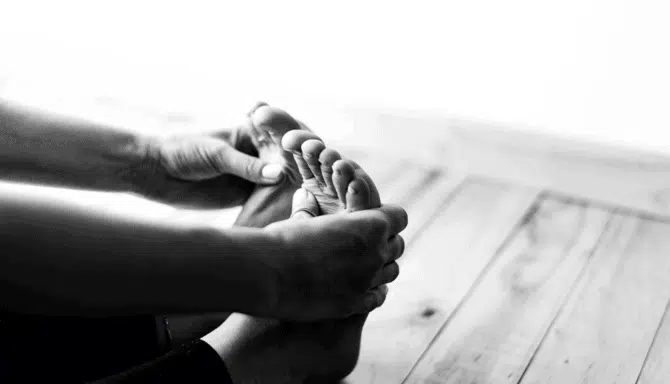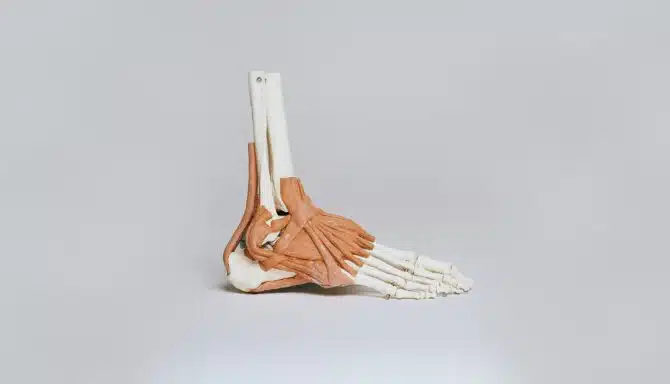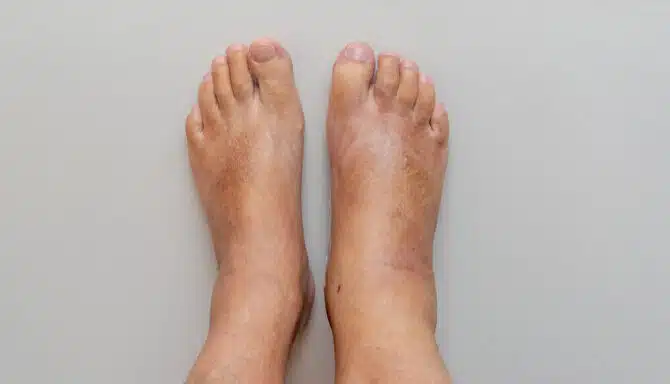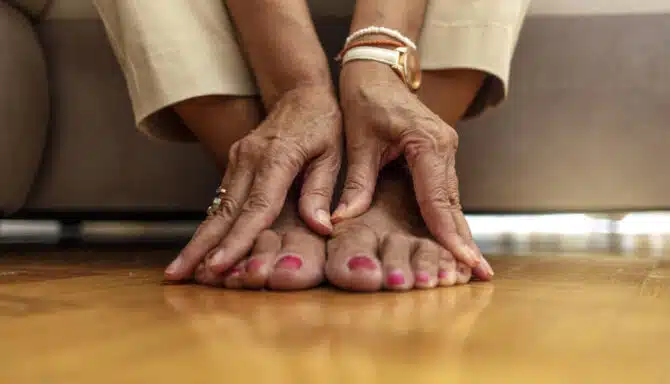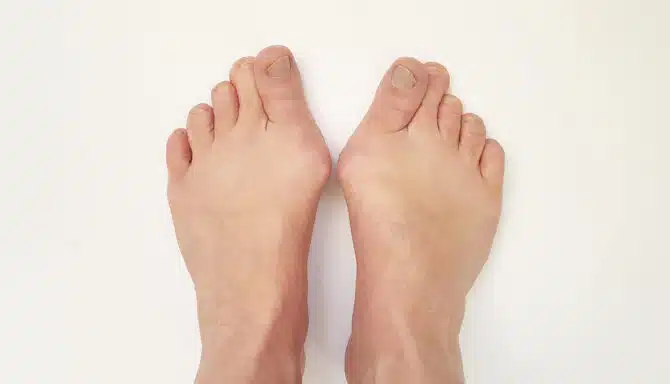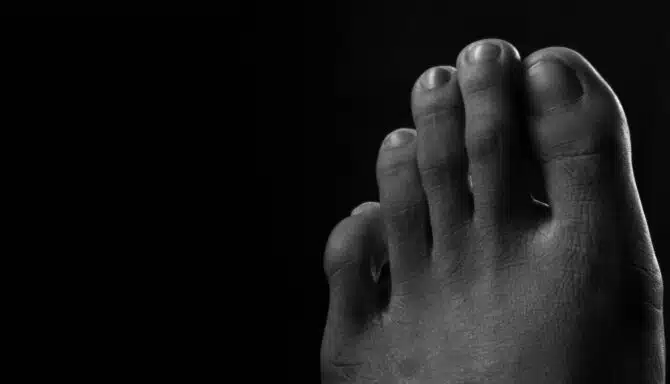Few lower leg injuries are as common as shin splints. In fact, between 30-70% of runners get injured each year, and about 35% of those injuries are attributed to shin splints.
Shin splints can be pesky injury as they can creep up fast, and often. Anyone that participates in high-impact sports like running, soccer, basketball, and the like are susceptible. Let’s get into shin splints 101 before outlining treatment and preventative measures.
What are shin splints?
Shin splints is a term generally used for any sort of lower limb pain associated with the tibia, the large bone in the front of your leg. Medial tibial stress syndrome is the proper term for the condition. It refers to stress on your shinbone and the connective tissues that attach muscles to your bones.
According to the Mayo Clinic, you might notice tenderness, soreness or pain along the inner side of your shinbone and mild swelling in your lower leg. At first, the pain might stop when you stop exercising.
Pain and severity varies. A stress reaction is irritation of the tibia while a stress fracture is a crack in the bone. If you ignore the early signs of shin splints, a reaction can turn into a fracture over time.
Causes of shin splints
There is rarely one single cause of shin splints. Rather, there may be a few factors that come into play including the following:
Overuse
No truer words have been said than “too much, too soon” to describe the onset of shin splints. Typically, runners experience shin splints when they ramp up either their intensity, or volume, too quickly. This is especially the case when coming back from injury as your body re-adjusts to the impact of running, and needs time to acclimate to the load running puts on the body.
Flat feet
People with flat feet may experience ongoing difficulties with shin splits. This is the case because those with flat feet have a collapsed arch during their normal gait. As such, your ankle rolls inward more so than it should, also known as overpronation – as your arch does not act as a governor.
Runners and walkers with flat feet may benefit from orthotics to artificially support their arch, and to prevent flat feet-induced injuries and conditions. Additionally, physical therapy including the taping of your arch may benefit you when struggling with flat feet and shin splints. See our blog post on Daily Feet Exercises for more information on exercises you can try to keep your feet strong and healthy.
Don’t worry, you’re not alone in this battle. About 30% of the population lives with flat feet.
Improper footwear
If you suffer from shin splints, the source could be your shoes. It may not even be your specific running footwear either. In fact, the shoes you wear when you’re not running could actually be the problem. Determining the right shoe for you, whether that’s an off-the-shelf running shoe, or the addition of orthotics comes down to a number of factors including weight, foot type, mileage, and much more. To learn more about proper running footwear, check out this handy resource, or visit us Feet First Clinic to speak with a professional.
Treatment
Although shin splints are common and can creep up quickly on you, fortunately, there are a number of treatment options that can have you feeling better quite quickly. Fortunately, shin splints can be managed and treated quite effectively.
Reduce load
First, reduce the activity which is causing the pain. Why? Shin splints is a repetitive injury and the condition is a stress reaction in the shin bone.
If that’s running, consider replacing that form of training with another, low-impact exercise like cycling, swimming, cross-country skiing, or using the elliptical. Depending on the severity of shin splints, you may still be able to run. And oftentimes, complete rest may not even be the best form of treatment. Rather, a reduction, and physical therapy while maintaining some forms of exercise, may be the best defense.
Icing
As shin splints are caused by the body not being able to repair itself fast enough, icing can help reduce inflammation caused by the repetitive nature of running. Additionally, icing the area can provide pain relief. Fill a paper cup with water and freeze it. Then apply it to your shin bone for 5-10 minutes.
You can also supplement icing with anti-inflammatory to reduce pain and inflammation.
Prevention
Proper footwear
Prevention begins with proper footwear. Depending on whether you overpronate or supinate, you’ll need to find a pair of shoes that’s right for your body. This can be said for both your running footwear, as well as personal footwear. If you find yourself wearing flat-soled feet often casually, consider replacing them with more supportive shoes that support your arch, and put less pressure on your lower limbs.
We also know that there is a breakdown of running mechanics when wearing worn-out shoes. Replacing your footwear every 500 kilometres or so is beneficial.
Foot exercises
One of the most common exercises is the toe curl. Place a towel on the ground, and while keeping your heel on the floor, bring the towel towards you with your toes. Pretend you’re using your feet like your hands to bring the towel closer to your body.
Another exercise is the heel drop. With one foot on a step or a ledge, and the other heel raised up, lower the heel and raise it again until it’s parallel to the ground. Keep your leg straight. Repeat 10-15 times per leg, and you should feel the muscles in your calf and ankle.
Finally, you can foam roll your calves, and gently massage along the tibia to break up some of the scar tissue. This can be done both before exercise, as returning from shin splints can often be easier when doing a proper warmup, or after exercise. In general, tight calves and Achilles tendons can exacerbate shin splints, so stretching them out can be a source of relief, both in the short-term and long-term.
Training plan
When it comes to runners, many of us always want to do more. But, sometimes our aerobic fitness is ahead of where our bodies are at. It’s important to listen to your body and recognize the early signs of shin splints: dull pain along the inside of your tibia and aches after runs. The worst thing you can do is nothing. Running through pain is never a good idea, and shin splints rarely go away on their own.
Instead, if you feel as though you want to ramp up the intensity or volume of your training, consider following the 10% rule. In essence, the 10% rule recommends increasing your weekly mileage by no more than 10% per week. So if you run 30 kilometres per week, aim to reduce your weekly mileage by no more than 3-4 kilometres. If you’re at 50 kilometres, ramp up your weekly mileage by about 5-6 kilometres.
Surface
Surface also matters. Harder surfaces like asphalt and concrete have a greater impact on your body while running on grass and trails softens the load. Opt for softer surfaces if you experience shin pain, and incorporate them within your routes as you return to running.
If you continue to experience shin splints, and are seeking professional help, don’t hesitate to reach out to us.
You do not need a referral to become a patient at our Toronto Foot Clinic.
Schedule an appointment by using the appointment request form below or contact the clinic at 416-769-FEET(3338).


